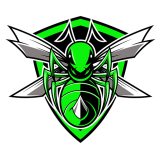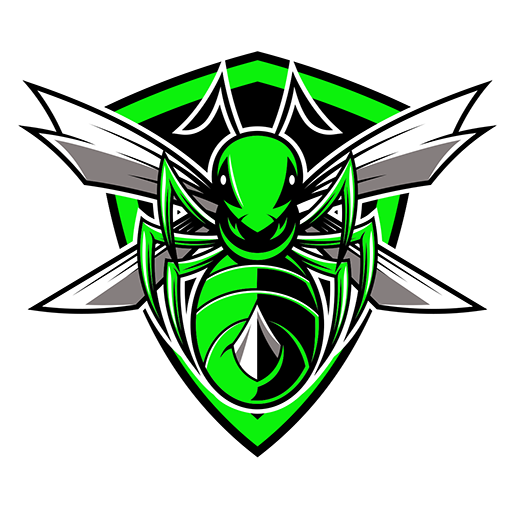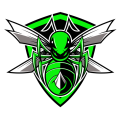Common Pests: Ants
Potential damage to homes, gardens and structures
Ants are social insects that form colonies and forage for food. While they play a role in ecosystems by aerating soil and preying on pests, they can also cause damage to homes and structures by nesting indoors, contaminating food, and inflicting painful bites.
In the United Kingdom, ants are a common household pest, with several species causing nuisance and potential damage to homes, gardens, and structures. The most prevalent ant species in the UK include the black garden ant (Lasius niger), the ghost ant (Tapinoma melanocephalum), and the pharaoh ant (Monomorium pharaonis). While ants serve essential ecological roles, such as seed dispersal and soil aeration, their presence indoors can lead to various problems and damage.
Black garden ants, often seen in gardens and urban areas, are known for their large colonies and relentless foraging behavior. While they primarily feed on sugary substances and insects, they can invade homes in search of food, particularly sweet or sticky residues. Once indoors, they can contaminate food stores and surfaces, leading to hygiene concerns and food spoilage. Additionally, black garden ants may establish nests in walls, under floorboards, or in damp areas, causing structural damage over time.
Commonly found in kitchens and bathrooms
Ghost ants, characterized by their pale color and tiny size, are commonly found in warm, humid environments such as kitchens and bathrooms. Despite their small size, ghost ants can quickly infest homes, nesting in wall voids, electrical outlets, and appliances. They are attracted to sugary foods, grease, and moisture, making kitchens and pantries prime targets. Ghost ants do not usually cause structural damage but can become a nuisance and pose sanitation risks if left unchecked.
Pharaoh ants, notorious for their invasive behavior and rapid reproduction rate, pose significant challenges for homeowners and pest control professionals alike. These tiny yellowish ants are capable of forming massive colonies with multiple queens, making them difficult to eradicate. Pharaoh ants are known to infest hospitals, nursing homes, and food establishments, where they can spread pathogens and contaminate sterile environments. In homes, they may nest in wall voids, behind baseboards, or in electrical appliances, causing damage to property and posing health risks.
Potentially exacerbating existing structural issues
While ants themselves may not cause direct structural damage comparable to termites or carpenter ants, their nesting habits and foraging behaviors can contribute to property deterioration over time. Ant colonies established in wall voids or beneath foundations may weaken structural integrity and compromise building materials. Furthermore, ants seeking moisture or shelter may enter homes through cracks, gaps, or vents, potentially exacerbating existing structural issues.
Beyond structural concerns, ants can also impact gardens, lawns, and outdoor spaces. Some ant species, such as the yellow meadow ant (Lasius flavus), create unsightly mounds in grassy areas, disrupting landscaping efforts and causing inconvenience to homeowners. Additionally, ants can protect and foster aphid populations, leading to plant damage and reduced crop yields in agricultural settings.
Significant challenges for homeowners
In conclusion, while ants may seem innocuous at first glance, their presence in homes and gardens can lead to various problems and damage. From contaminating food stores and compromising hygiene to nesting in wall voids and causing structural deterioration, ants pose significant challenges for homeowners and require effective pest management strategies to control and mitigate their impact.
Common pests
Cockroaches
Cockroaches are resilient insects that thrive in warm, humid environments. They contaminate food, surfaces, and indoor air with bacteria, allergens, and pathogens, posing health risks to humans. Their presence can trigger asthma and allergies, and they can cause food poisoning by transmitting harmful microorganisms.
Rats
Black rats (Rattus rattus) are agile climbers that infest buildings, contaminating food, water, and surfaces with their feces and urine. They gnaw on electrical wiring, insulation, and structural materials, causing property damage and fire hazards. Their presence poses health risks, transmitting diseases such as leptospirosis and salmonellosis.
Mice
House mice (Mus musculus) are small rodents that infest homes, contaminating food, surfaces, and belongings with their feces, urine, and saliva. They can cause structural damage by gnawing on wires, insulation, and furniture. Their presence poses health risks, transmitting diseases such as salmonella and hantavirus.
Flies
Flies are common pests in the UK, spreading diseases such as salmonella and E. coli through contamination of food and surfaces with their feces and vomit. Their presence can lead to food poisoning, gastrointestinal infections, and other health problems, posing risks to human health and hygiene.
Bed bugs
Bedbugs are small, reddish-brown insects that feed on blood, often at night while their hosts sleep. Infestations can lead to itchy bites, skin rashes, and psychological distress. Though they don’t transmit diseases, their presence can cause anxiety and disrupt sleep, leading to emotional and mental strain.
Wasps
Wasps are stinging insects that can build nests in and around buildings, posing risks to occupants. Their stings can cause severe allergic reactions in some people. Additionally, they can damage crops and disrupt outdoor activities, leading to economic losses and social inconvenience.
Ants
Ants are social insects that form colonies and forage for food. While they play a role in ecosystems by aerating soil and preying on pests, they can also cause damage to homes and structures by nesting indoors, contaminating food, and inflicting painful bites.



